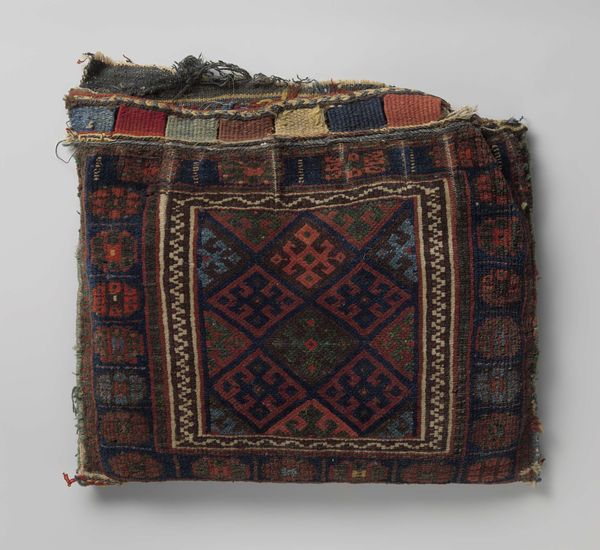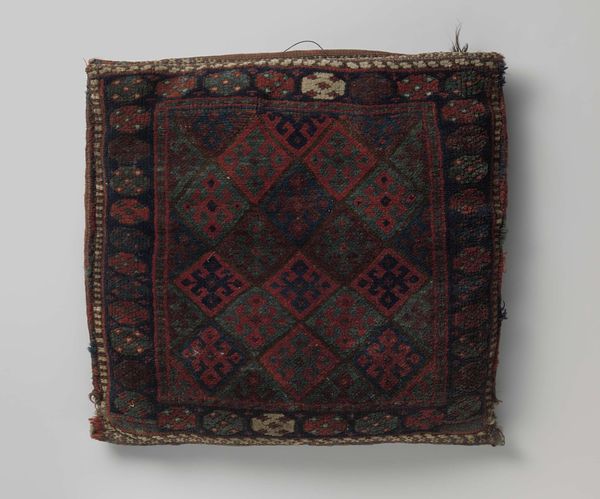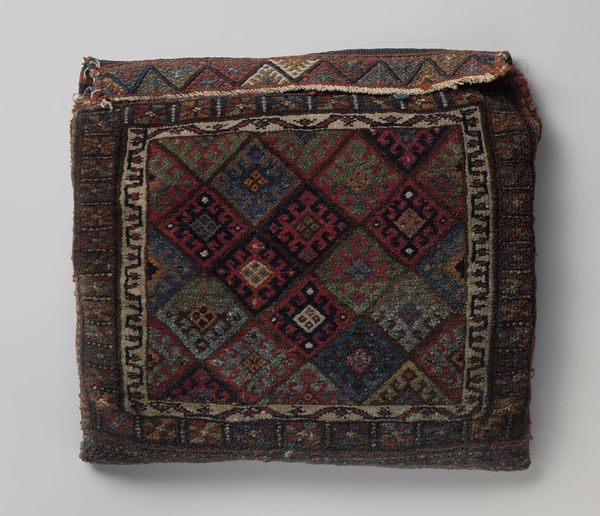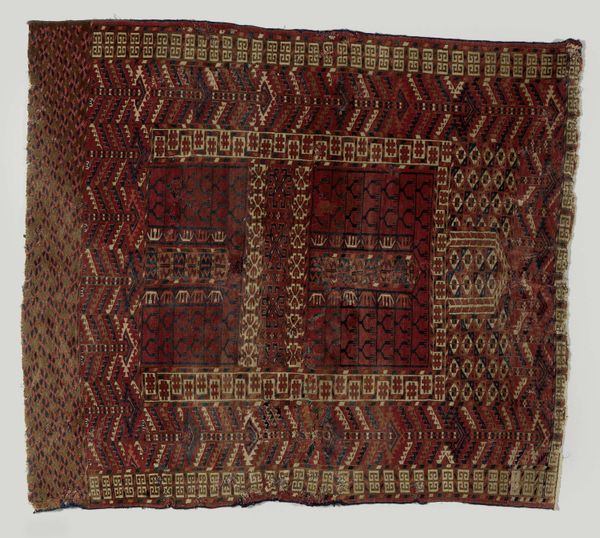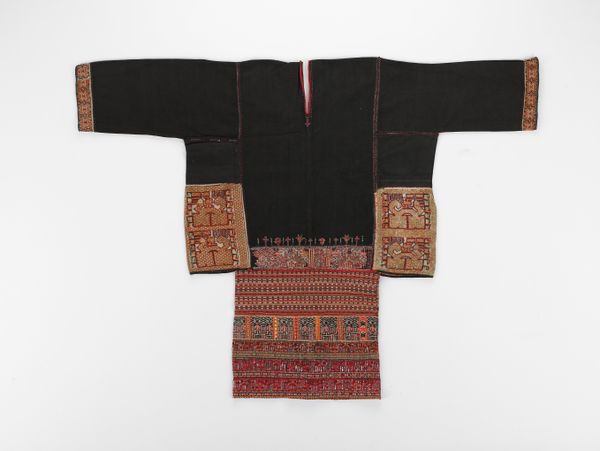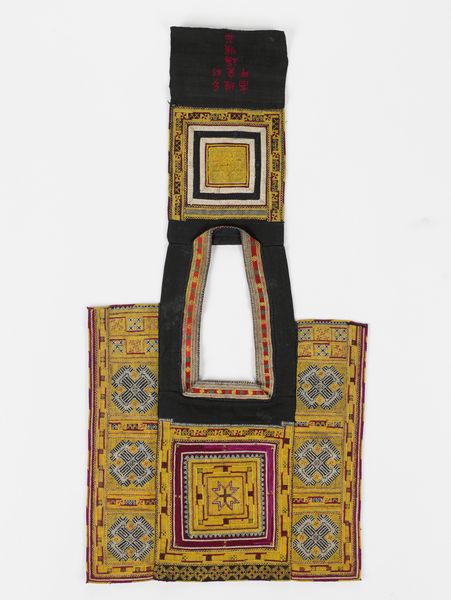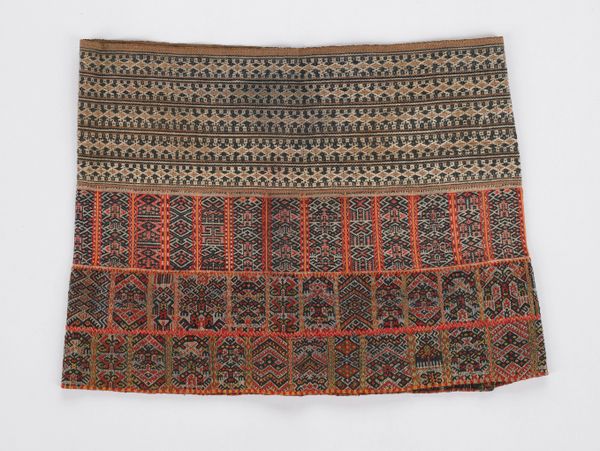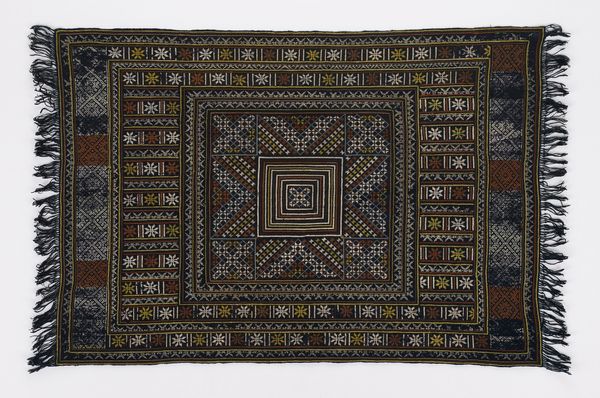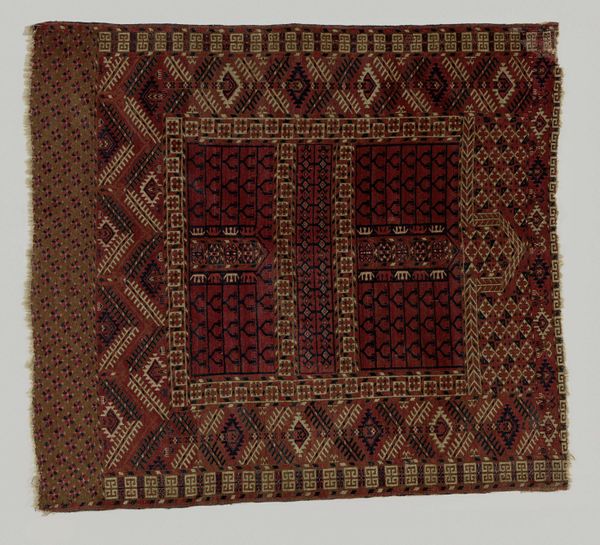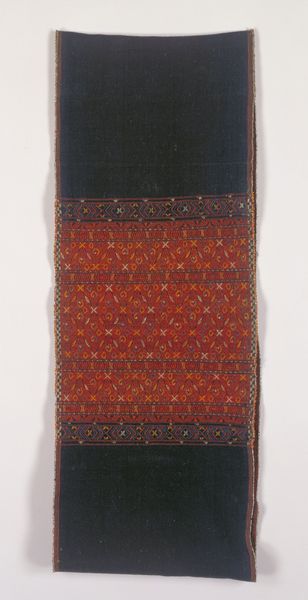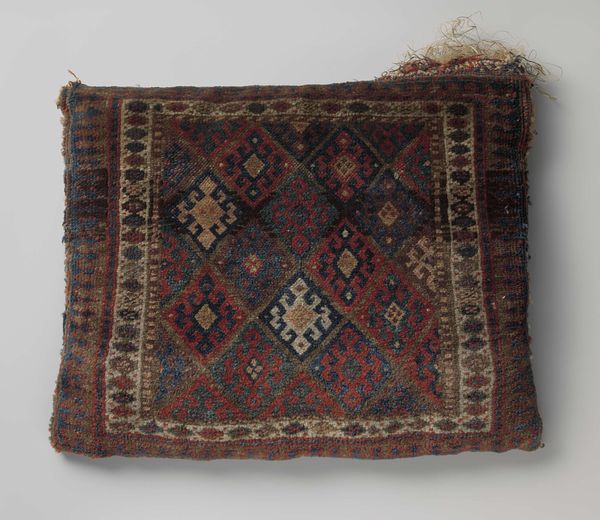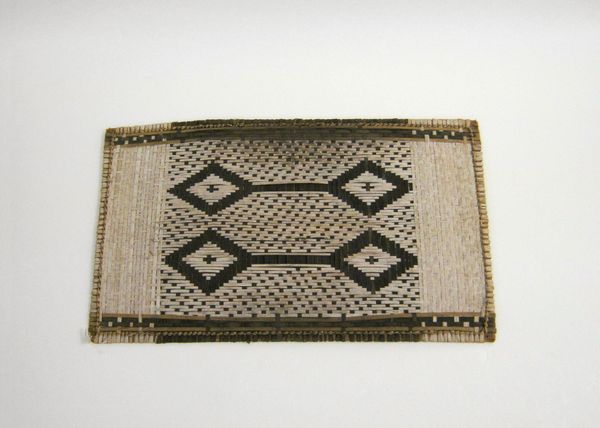
fibre-art, textile
#
fibre-art
#
asian-art
#
textile
#
geometric
Dimensions: 16 1/4 x 16in. (41.3 x 40.6cm)
Copyright: Public Domain
Editor: So this is a Woman's Festival Apron, made by Gejia, Miao people around the 20th century. It’s textile art, using cotton and weaving techniques. The geometric patterns are quite striking! I’m curious – what sort of symbolic weight do these kinds of pieces carry? Curator: Well, an apron, first and foremost, speaks of work, of preparation, of being ready. But this isn’t just any apron, is it? This is specifically for festivals. The intense, layered geometric patterns are common in Miao textiles and function almost as a cultural map. The red, traditionally, symbolizes prosperity and celebration, a wish perhaps embodied in the act of wearing during a festival. What do you think these repeated patterns could signify? Editor: I'm not sure, but seeing it makes me think of the phrase, "wearing one's heart on their sleeve". So is it like, wearing your identity on your apron? Curator: Precisely! It could also reflect a visual language passed down through generations. Think of each woven line as a memory, each colour a shared experience. The act of creating the apron, the communal participation in the festival, the wearing of the apron itself – each contributes to cultural memory and continuity. Does understanding the cultural use influence how you perceive it? Editor: Definitely! It’s gone from being just a visually interesting piece to something with a story, almost like a personal history. It’s a window into another culture. Curator: It certainly is! It speaks to how even everyday objects can be powerful symbols. Editor: I see how a simple piece of cloth becomes so much more than its materials. Thanks for sharing all that!
Comments
No comments
Be the first to comment and join the conversation on the ultimate creative platform.
